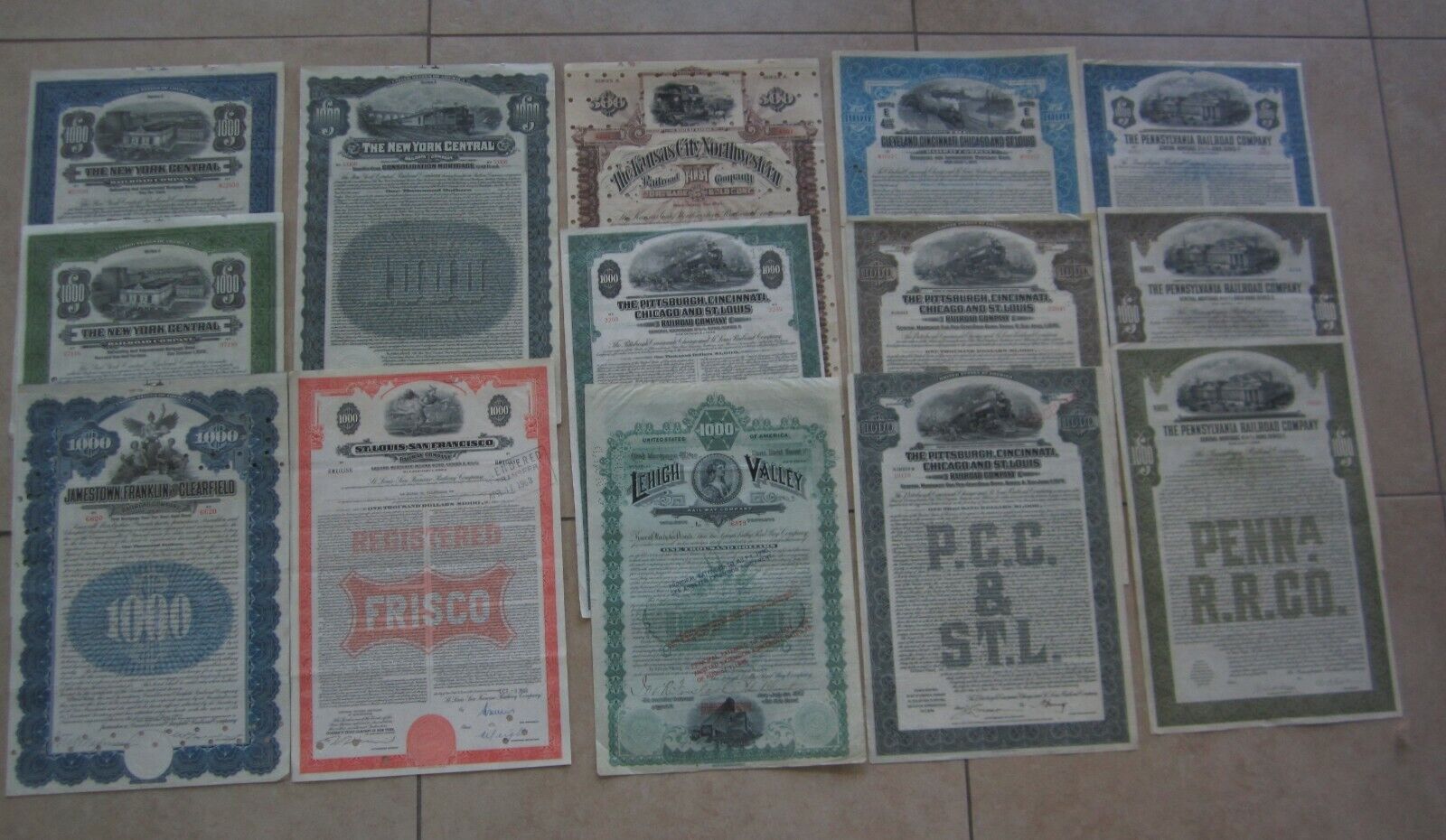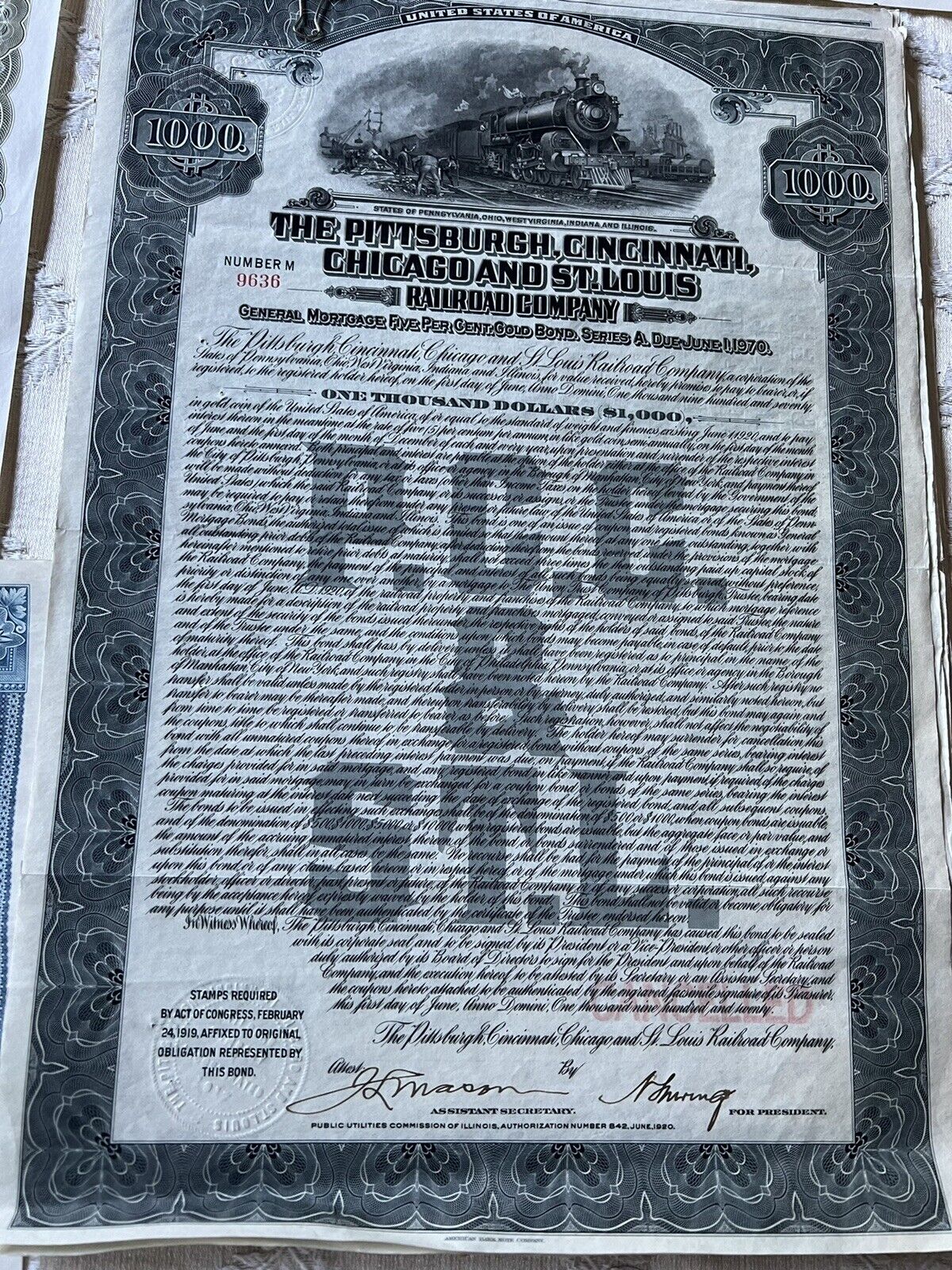-40%
Southern Railway Company Bond Certificate - Beautiful Vignette!
$ 4.75
- Description
- Size Guide
Description
Product DetailsBeautifully engraved antique bond certificate from the Southern Railway Company dating back to the 1940's. This document, which is signed by the company Vice President and Assistant
Secretary, was printed by the American Bank Note Company and measures approximately 13 1/2" (w) by 9 1/4" (h).
The vignette features numerous Southern trains at a busy mill.
Images
The images presented are representative of the piece(s) you will receive. When representative images are presented for one of our offerings, you will receive a certificate in similar condition as the one pictured; however dating, denomination, certificate number and issuance details may vary.
Historical Context
The Southern Railway was the product of nearly 150 predecessor lines that were combined, reorganized and recombined beginning in the early 19th century, formally becoming the Southern Railway in 1894. It was combined with the Norfolk and Western Railway to form the Norfolk Southern Railway in 1982.
History
The pioneering South Carolina Canal and Rail Road Company, Southern's earliest predecessor line and one of the first railroads in the United States, was chartered in December 1827 and ran the nation's first regularly scheduled steam powered passenger train – the wood-burning Best Friend of Charleston – over a six mile section out of Charleston, South Carolina. By 1833, its 136-mile line to Hamburg, South Carolina, was the longest in the world.
As railroad fever struck other Southern states, networks gradually spread across the South and even across the Allegheny Mountains. Charleston, South Carolina and Memphis, Tennessee, were linked by 1857, although rail expansion halted with the start of the Civil War. The Richmond and York River Railroad, which operated from the Pamunkey River at West Point, Virginia to Richmond, Virginia, was a major focus of George McClellan's 1862 Peninsular Campaign, which culminated in the Seven Days Battles and devastated the tiny rail link. The Richmond and Danville Railroad was the Confederacy's last link to Richmond, and transported Jefferson Davis and his cabinet to Danville, Virginia just before the fall of Richmond in April, 1865.
Known as the "First Railroad War," the Civil War left the South's railroads and economy devastated. Most of the railroads, however, were repaired, reorganized and operated again. In the area along the Ohio River and Mississippi River, construction of new railroads continued throughout Reconstruction. The Richmond and Danville System expanded throughout the South during this period, but was overextended, and came upon financial troubles in 1893, when control was lost to financier J.P. Morgan, who reorganized it at the Southern Railway System.
The Southern Railway, as it came into existence in 1894, was a combination of the Richmond and Danville system and the East Tennessee, Virginia and Georgia Railroad. The company owned two-thirds of the 4,400 miles of line it operated, and the rest was held through leases, operating agreements and stock ownership. Southern also controlled the Alabama Great Southern and the Georgia Southern and Florida, which operated separately, and it had an interest in the Central of Georgia.
The Southern's first president, Samuel Spencer, drew more lines into Southern's core system. During his 12-year term, the railway built new shops at Knoxville, Tennessee, and Atlanta, Georgia and purchased more equipment. He moved the company's service away from an agricultural dependence on tobacco and cotton and centered its efforts on diversifying traffic and industrial development. Sadly, Spencer was killed in train wreck in 1906.
By the time the line from Meridian, Mississippi, to New Orleans, Louisiana was acquired in 1916 under Southern's president Fairfax Harrison, the railroad had attained the 8,000-mile, 13-state system that marked its territorial limits for almost half a century.
The Central of Georgia became part of the system in 1963, and the former Norfolk Southern Railway was acquired in 1974.










